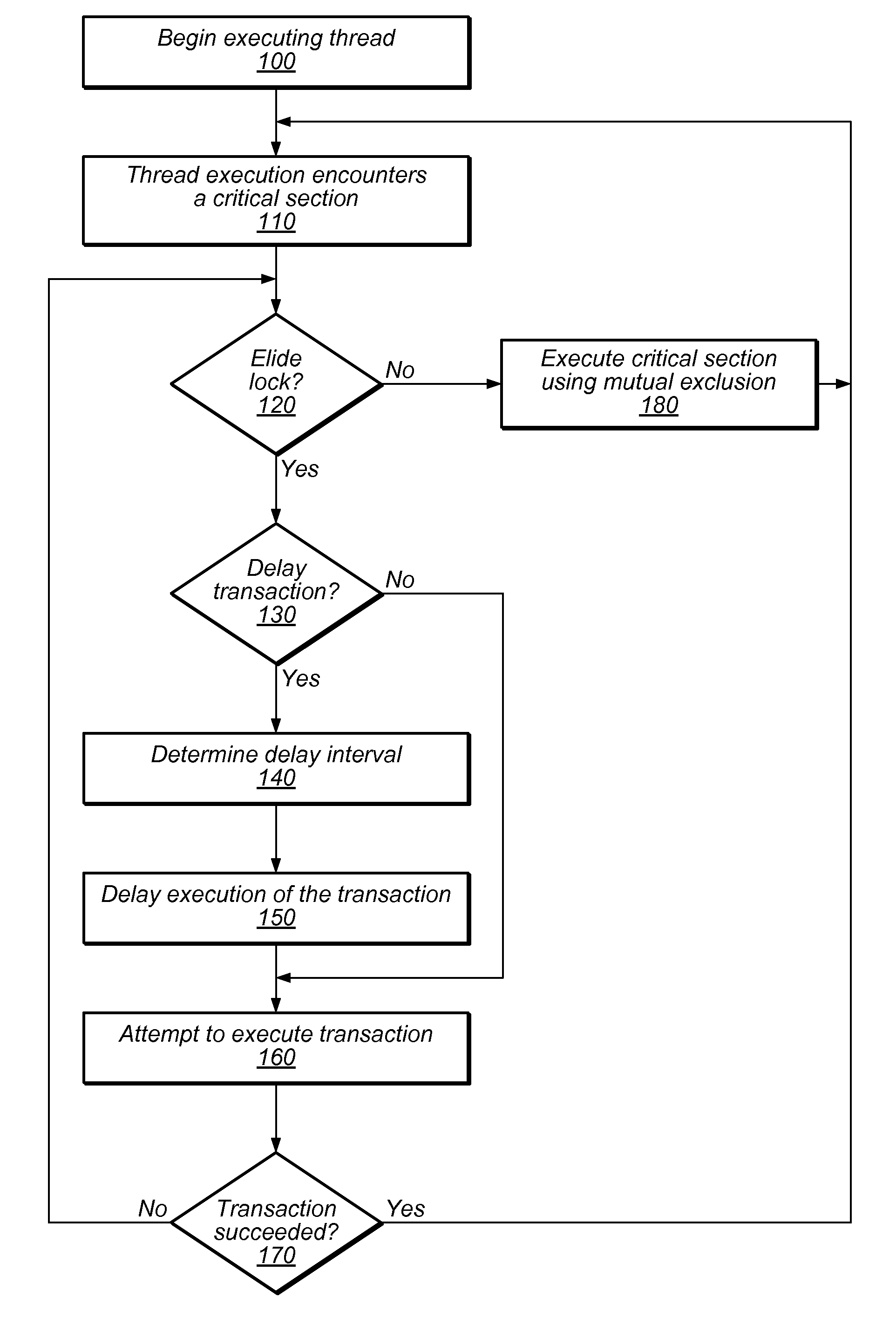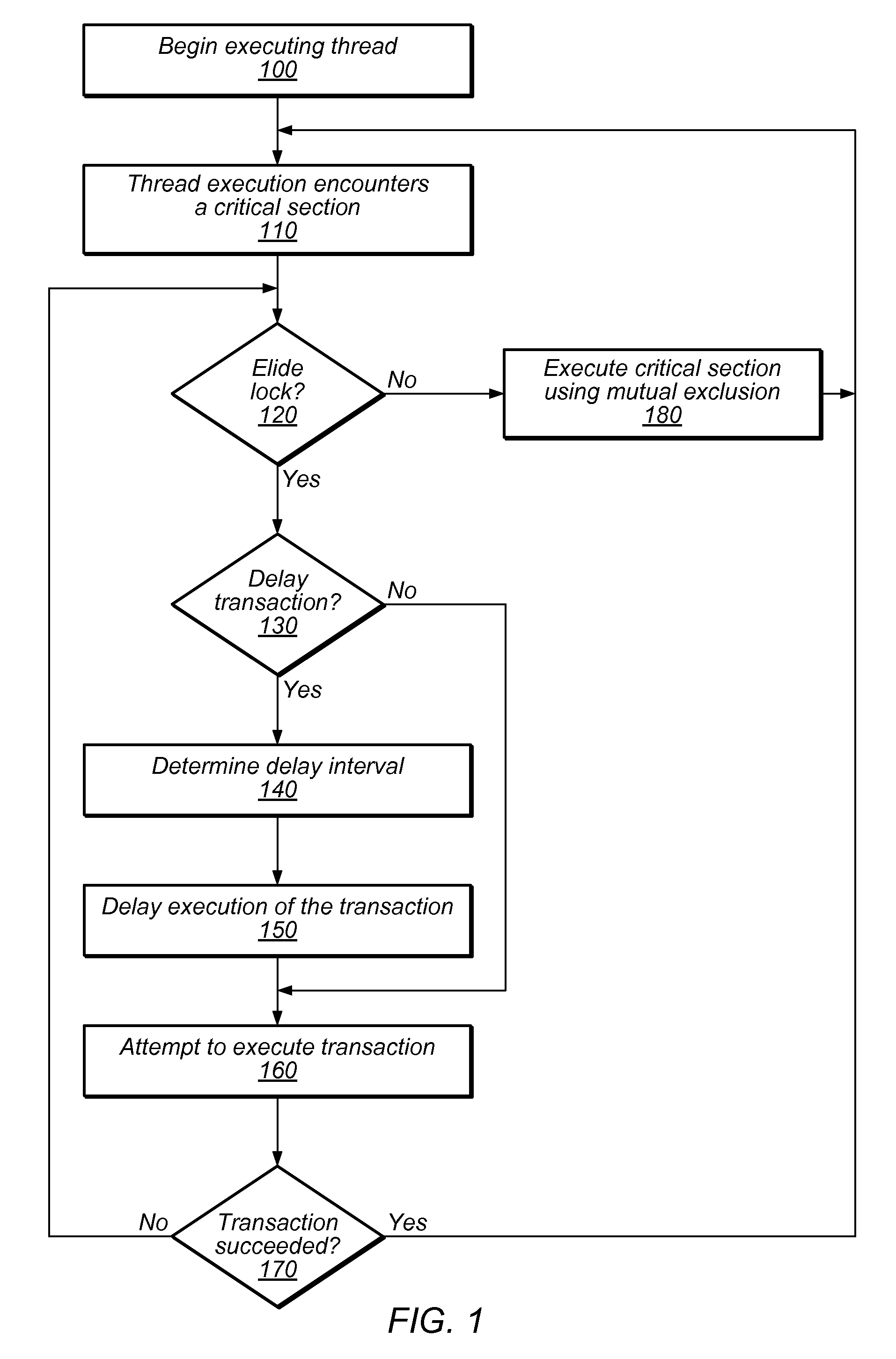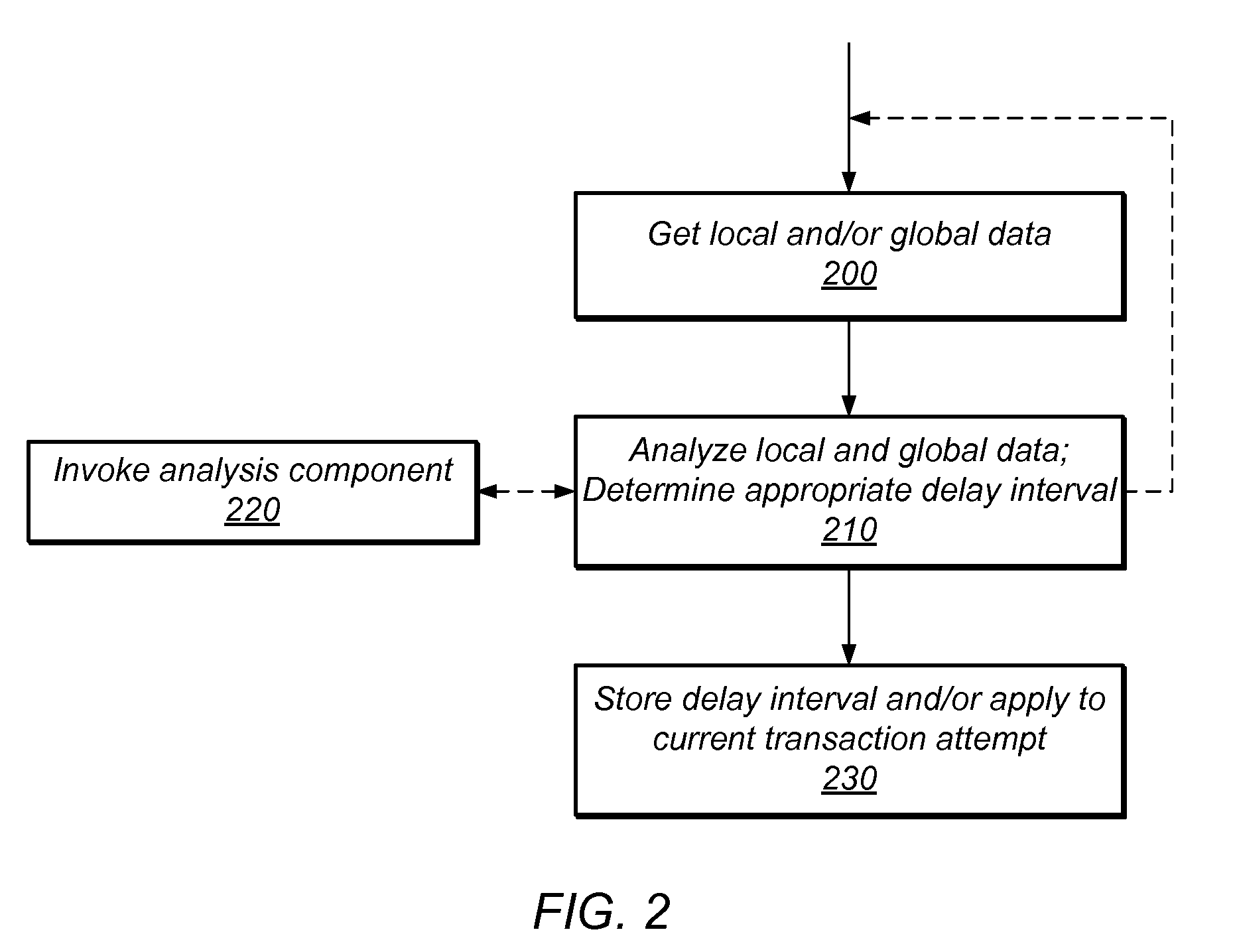System and method for managing contention in transactional memory using global execution data
a transactional memory and transactional memory technology, applied in the field of multi-threaded computer systems, can solve problems such as performance limitations, race conditions, and ineffective traditional approaches to boosting cpu performance, and achieve the effect of improving system performan
- Summary
- Abstract
- Description
- Claims
- Application Information
AI Technical Summary
Benefits of technology
Problems solved by technology
Method used
Image
Examples
Embodiment Construction
[0018]As used herein, the term critical section may refer to a code path or a set of program instructions protected by a given lock. For example, code within a Java™“synchronized” block is one example of a critical section. In various embodiments, the techniques described herein may also be applied to critical sections that are dependent on multiple and / or dynamically determined locks. The concurrent execution of a critical section by multiple threads may lead to incorrect program behavior.
[0019]As used herein, the term lock may refer to a software or hardware implemented mechanism associated with a critical section which may be used to ensure mutual exclusion, that is, that two threads do not execute the section concurrently. In order to execute a critical section, a thread may acquire and hold an associated lock. A lock is just one common implementation of mutual exclusion, or pessimistic concurrency control. Though several embodiments described herein include such locks, it shoul...
PUM
 Login to View More
Login to View More Abstract
Description
Claims
Application Information
 Login to View More
Login to View More - R&D
- Intellectual Property
- Life Sciences
- Materials
- Tech Scout
- Unparalleled Data Quality
- Higher Quality Content
- 60% Fewer Hallucinations
Browse by: Latest US Patents, China's latest patents, Technical Efficacy Thesaurus, Application Domain, Technology Topic, Popular Technical Reports.
© 2025 PatSnap. All rights reserved.Legal|Privacy policy|Modern Slavery Act Transparency Statement|Sitemap|About US| Contact US: help@patsnap.com



